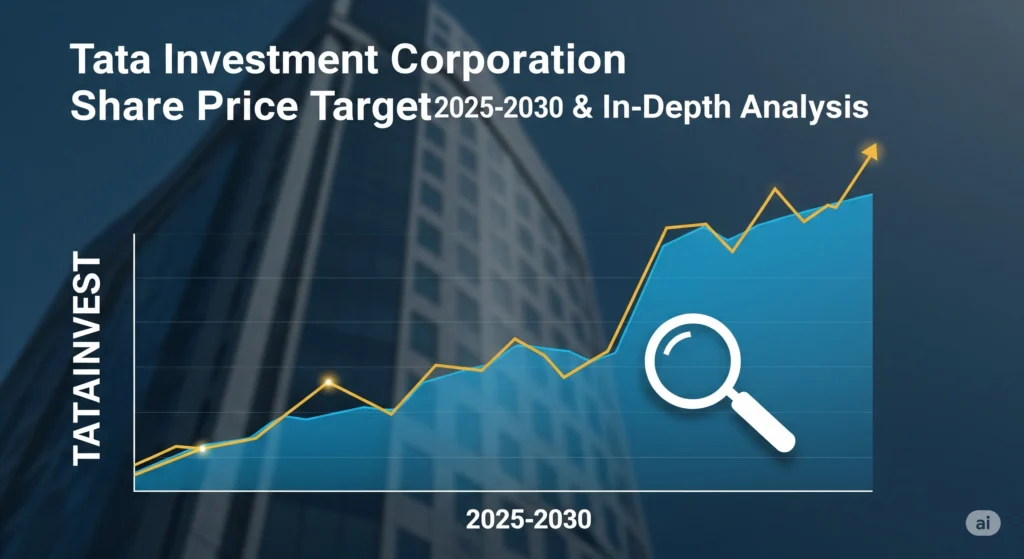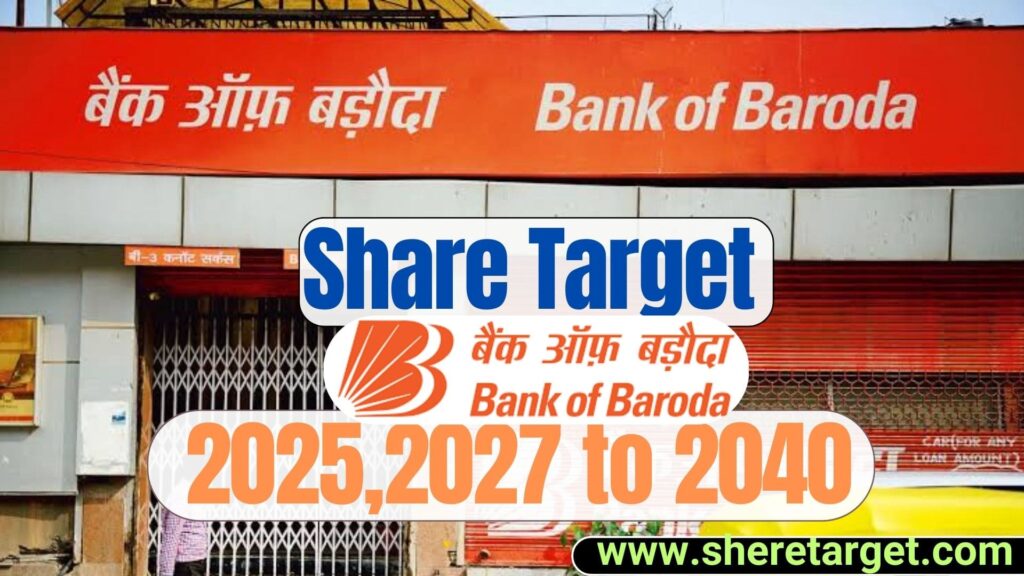Overview of Tata Investment Corporation
Tata Investment Corporation Ltd (TICL) is a non-banking financial company (NBFC) of the Tata Group. It operates as an investment holding company, primarily investing in listed/unlisted equities, debt instruments, and mutual funds across sectors. As of August 2025, the company has a market cap of ₹37,283 crore and a share price around ₹7,369.
- Promoter Holding: 73.38% (unchanged as of June 2025)
- 52-Week Range: ₹5,145.15 – ₹8,074.25
- Dividend Payout: Consistently above 40%, with a healthy 59% in recent years
Fundamental Analysis
1. Performance Over the Last Few Years
| Year | Sales (₹Cr) | Profit (₹Cr) | ROE (%) | ROCE (%) | Net Cash Flow (₹Cr) | Total Assets (₹Cr) |
|---|
| 2021 | 163 | 20 | 2 | 2 | -6 | 14,886 |
| 2022 | 254 | 25 | 1 | 1 | 4 | 20,990 |
| 2023 | 277 | 32 | 1 | 1 | -6 | 21,089 |
| 2024 | 385 | 39 | 1 | 2 | 106 | 32,870 |
| 2025 | 304 | 38 | 1 | 1 | -102 | 34,842 |
- Profit Growth: 10-year CAGR: 5%. Last year: –11% TTM
- Sales Growth: 10-year CAGR: 3%. Last year: –18% TTM
- ROE: Averages 1–2% (last year: 1%)
- ROCE: Also in the 1–2% range
- Net Cash Flow: Volatile, reflecting market cycles and investments
- Total Assets: Consistent increase year-on-year; over ₹34,800 crore in Mar 2025
2. Valuation Metrics (TTM, as of Aug 2025)
- P/E: 168.86
- P/BV: 1.14
- P/Sales: 115.76
- Stock Price CAGR (3y): 68%
- Debt: Almost debt-free
Pros
- Well-diversified, low-debt structure
- Healthy, sustainable dividend payout
- Backed by Tata Group’s reputation
Cons
- Low capital efficiency (ROE/ROCE ~1-2%)
- Earnings prone to fluctuation due to market dependency
Share Price Targets 2025-2030
Forecasts from Multiple Sources
| Year | Target 1 (₹) | Target 2 (₹) | WalletInvestor (₹) | Additional Range (₹) |
|---|
| 2025 | 7,732 | 7,848 | — | 7,303 – 8,404 |
| 2026 | 9,713 | 9,859 | — | 8,765 – 9,906 |
| 2027 | 13,107 | 13,303 | — | n/a |
| 2028 | 16,425 | 16,671 | — | n/a |
| 2030 | 23,547 | 23,899 | ~20,500 | 20,547 – 23,900 |
Key Takeaways:
- 2025: Most targets cluster around ₹7,700–₹8,400.
- 2026: Projected targets rise to ₹9,700–₹9,900.
- 2027–2028: Aggressive bullish forecasts into ₹13,000–₹16,600 band.
- 2029–2030: Some estimates are more conservative (~₹15,500 for 2029 per WalletInvestor), but others expect as much as ₹20,000+ by 2030.
Is Tata Investment Corporation Share Good to Buy?
Quantitative View
- Valuations are on the higher side (P/E 168+), but P/B is moderate (1.14), and diversification keeps portfolio risk low.
- Sales and profits have recently been flat/declining (–18% and –11%, TTM), reflecting a challenging market for holding companies.
- Returns (ROE/ROCE) are low and not likely to increase unless portfolio assets see exceptional growth.
Qualitative View
- It’s a long-term, low-beta wealth-compounding play, not a typical ‘high-growth’ equity.
- Best suited for risk-averse investors looking for diversified Tata Group exposure and steady income (dividends), and for those with a 5–10 year horizon.
Key Factors Influencing Tata Investment Corporation’s Performance
- Performance of Tata Group Portfolio: Much of TICL’s value is derived from its holdings in Tata Group companies.
- Market Volatility: External macroeconomic shocks tend to hit holding companies harder.
- Interest Rate Environment: Impacts valuations of investment portfolios.
- Regulatory Changes: New rules affecting NBFC investment companies or taxation could swing outlooks.
- Dividend Policies of Underlying Holdings: As TICL’s dividend income depends on investees’ distributions.
Major Competitors
| Competitor | Focus | AUM / Nature |
|---|
| Bajaj Holdings & Investment Ltd | NBFC / investments | Diversified, Bajaj Group |
| L&T Finance Holdings | Financial services | Large NBFC |
| Shriram Asset Management | Mutual funds/AMCs | Focus: Asset Management |
| Mahindra & Mahindra Financial Srv. | NBFC | Rural, vehicle-centric |
Expert Forecasts and Market Sentiment
Bull Case
- If Indian equity markets outperform and Tata Group companies continue to deliver, TICL’s NAV and dividend income could rise sharply.
- Strong visibility of India’s economic momentum, increasing financialization, and new IPOs/businesses within Tata Group.
Bear Case
- Prolonged market correction or high macro volatility could depress book/NAV and market value.
- Lower dividends from core holdings or regulatory tightening could hurt earnings.
- Valuations could shrink if growth expectations fade.
Conclusion
Tata Investment Corporation is a conservative, long-term wealth-building stock driven by the broader Tata Group’s success and Indian equities’ trajectory. Its recent financials look subdued, but its potential for compounding remains, especially if the underlying assets grow robustly. With share price targets suggesting 20–25% annualized returns in an optimistic market, it earns a place in portfolios aiming for stability backed by Tata pedigree.
However, at the current high valuation, consider phased or SIP-style buying, especially if you seek lower downside risk. Always consult a SEBI-registered financial advisor before making significant investments.
How to Buy Tata Investment Corporation Shares
- Open a Demat & Trading Account with any SEBI-registered broker (e.g., Zerodha, ICICI Direct, Groww).
- Search for the Symbol: “TATAINVEST” on NSE or BSE platforms.
- Analyze Fundamentals: Use tools like Screener, Moneycontrol, or TradingView to view recent earnings and technical charts.
- Decide on Amount/Timing: Use lump sum for dips or systematic investments (SIP) for rupee cost averaging.
- Place Order: Specify quantity and price (market or limit).
- Monitor Portfolio: Review investment quarterly or after annual results for any portfolio/strategic changes.
Frequently Asked Questions (FAQs)
Q1: What is Tata Investment Corporation’s primary source of income?
A: Dividend income and capital gains from listed equity investments (mostly Tata Group stocks).
Q2: Is it a mutual fund or a holding company?
A: It is a holding NBFC company, not a mutual fund.
Q3: What are the key risks?
A: High market dependency, low ROE, and any slowdown in the Indian markets or Tata Group companies.
Q4: Does Tata Investment share split or bonus?
A: In August 2025, Tata Investment announced its first-ever stock split in a 1:10 ratio.
Q5: What is the ideal holding period?
A: 5+ years for compounding and dividend benefits.
References: Data, targets, and ratios from Moneycontrol, Screener, SharePrice-Target, StockPriceArchive, WalletInvestor, 5Paisa, Smart-Investing, Indiapropertydekho, SimplyWallSt, and company results.



